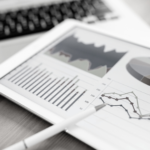A time and motion study is a business process improvement tool that systematically examines how people work. It identifies the multiple tasks people perform and the time spent on each. This information can then be used to identify non-productive tasks, improve workflows and improve your understanding of the costs of doing business.

Why conduct a time and motion study?
If you’ve never thought about business process improvement before, it’s a great place to start. And because business processes naturally evolve and change over time, it can be helpful to revisit periodically for a check-in. I’ve also used them as a coaching tool – individuals often find the results provide valuable insight that helps them focus on their most high-value tasks. Finally, it’s a great tool to work out unit costs and the actual cost of delivering your service or product.
How to conduct a time and motion study
At its core, a time and motion study will observe a worker over a sample period and record the individual tasks they perform. There are a few different approaches you might take to this. As with any business process improvement project, the best method will be determined by the unique nature of your business.
It is always important to consider:
- The expected return on investment
- The size and scope of your business
- The impact that the project will have on daily operations
- The purpose for which the data will be used
And any time you measure behaviour, you are automatically creating bias. This is because the participants know they are being observed and may consciously or unconsciously alter their behaviour.
Time and motion study methods
Some of the possible methods for gathering data include:
- Having an observer record what a worker is doing
- Having workers self-report on their tasks. This could be done
- Retrospectively
- By taking a sample at fixed points in time
- Software solutions
Third-Party Observer
One way to collect data is to have someone observe the worker and record the tasks that they perform. This will eliminate the bias that comes with self-report however is likely to increase bias due to the worker being aware of the observer.
I’ve found this method most useful in busy workplaces such as doctors’ surgeries and nurse stations where self-reporting is impractical and may impact the quality of patient care.
This is also likely to be the most expensive option to implement.
Self Report
There are several approaches to gathering self-report data. The best strategy for you will be determined by the scale of your project, return on investment and desired degree of accuracy.
Self-report – Retrospective
The simplest way to gather data on daily tasks is to ask a staff member to list them. For example, at the end of each day, your staff member could list all the jobs they performed and the amount of time they spent.
Due to memory and self-report bias, this is the least accurate method. However, it may be a valid starting point in designing your study. It can also be helpful as a coaching tool when managing staff.
Self-report – Sampling
A commonly used method is to have your team complete a form or spreadsheet throughout the day with a record of their activities. This typically involves:
- Recording all tasks for a short period, for example, one-hour intervals or
- Recording the one task a worker is performing at fixed points in time – for example, if a timer goes off every hour, the worker will record only the task they were performing at that moment
While subject to the different biases we have already discussed, both are effective methods and will provide you with valuable data.
I’ve put together some free data collection templates that you can use for your own project. Choose a simple tracker or a more complex spreadsheet.
Software Solutions
These are ideal if most of your work is performed on a computer or phone.
Depending on your workplace, you may have a lot of productivity data available in the software you are already using. Again, this is a fantastic resource as it will not have been affected by the observer or self-report biases. It is always worth investigating the data you already have available when commencing an improvement project.
Several tools are available for this purpose if you don’t have this sort of data available. Most modern project management platforms have this ability built in. If you don’t need project management capabilities, many products focus on time tracking and productivity.
I use RescueTime to keep an eye on my personal productivity. It automatically tracks my time on different tasks on my computer and mobile. Then you can use the data to report in detail your activity. You can set it up for individuals or teams.
Clockify is another popular choice; however, this requires more manual input.
Proceed with Caution
Conducting a time and motion study requires careful planning and strategic communication. Many workers will feel threatened by the activity, seeing it as management checking up on them. Others may think that the study is not a valuable use of their time and will not approach the exercise with any attention to detail.
If possible, it can help to allow people to submit their data anonymously.
In any case, spend some time choosing participants carefully. Staff committed to achieving the same outcomes you hope to address with the study will be great allies. And be sure to reassure your team that this is an exercise in gathering data to improve the workplace, not to punish individuals.
What next?
If you think your business might benefit from conducting a time and motion study but aren’t sure where to start, I’d be happy to answer any questions – just reach out via my website. These projects can be easily managed in-house for small to medium businesses and can really impact your bottom line.





















